If you have ever seen these amphibians out and about, you have probably wondered how many types of frogs there are. A different variety appears whenever we see one in the wild, on television, or in the movies. We also always confuse them with toads – since they look and act extremely similar. For those interested in frogs – and not just the fairy tale variety – this article will provide a synopsis of types of frogs in nature and possibly in your own home.
Before we talk about types of frogs, let us first explain frogs and toads. Believe it or not, toads and frogs are essentially the same creatures, scientifically speaking. Both are members of the order Anura, from the amphibian family. This means that they are amphibians who do not have tails. Frogs and toads share the same general body type and style, eat many of the same foods, live in similar environments, and even act and behave the same way.
Let’s explore the marvelous world of frogs with their hopping, croaking and colorful characteristics. Entertaining us for centuries due to their unusual behaviors, these amphibians can provide an insight into a range of frog families plus diverse types that make incredible sounds. It is time to uncover some remarkable facts about these critters – so let’s take this exciting jump together!
Short Summary
- Frogs are fascinating creatures with remarkable adaptations and behaviors.
- Human activity poses significant threats to frog populations worldwide, requiring conservation efforts.
- Frogs and Toads share many similarities, despite some physical differences.
Fascinating Frog Families
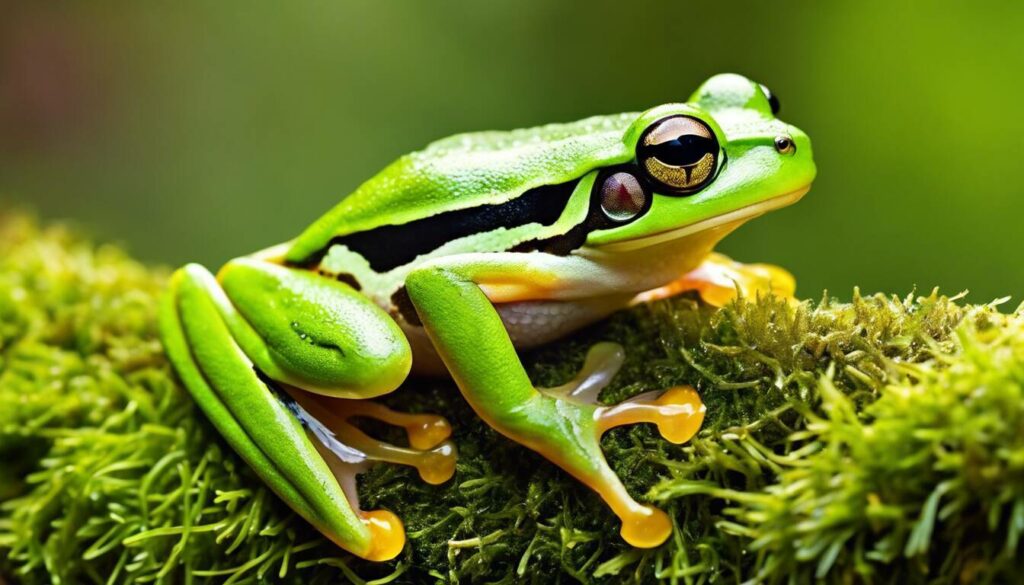
The world of frogs is incredibly diverse, with three main families that stand out: Dendrobatidae (poison dart frogs), Ranidae (true frogs), and Centrolenidae (glass). Notable species such as the Purple Harlequin Toad, Spotted Tree Frog, Red-backed Poison Frog, and Malayan Horned Frog all display unique characteristics with captivating colors. Unfortunately, there are threats to frog populations, like habitat destruction or international pet trade, which may lead to a worrying future for these amphibians.
Poison Dart Frogs (Dendrobatidae)
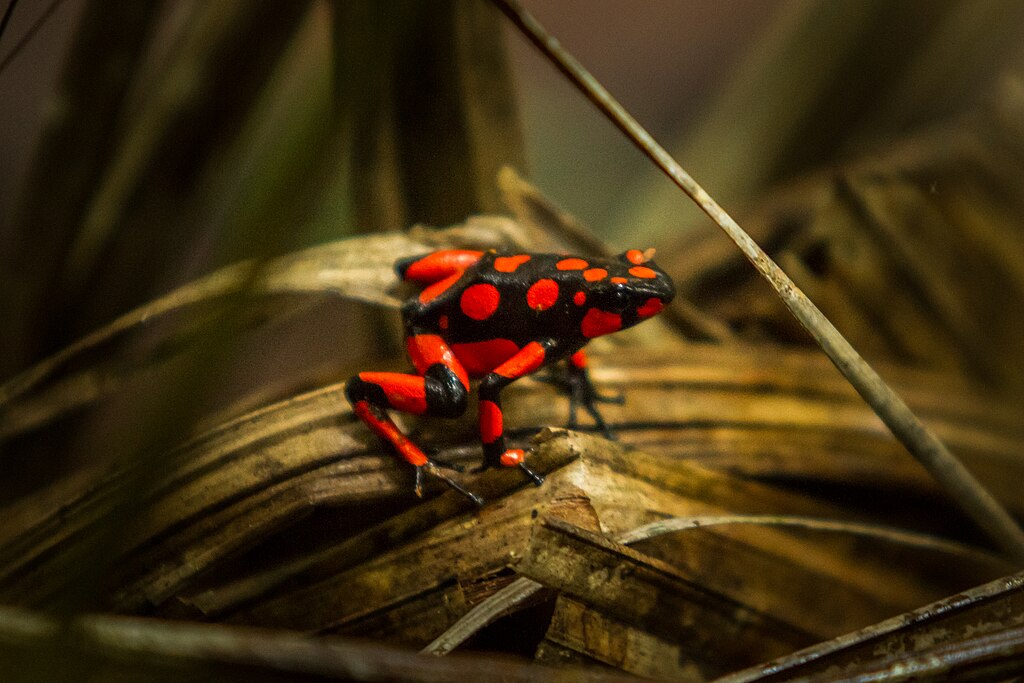
Poison frogs can be found in the neotropical region of northern South America, living on the forest floor and consuming formicine ants. These creatures are well-known for their vibrant colors, indicating toxicity as a warning to predators.
The golden poison frog is one of these species listed as endangered due to its venom, which was traditionally used by Emberá people with blowdarts when hunting. While some members have higher levels of danger than others, all carry varying risks if handled without caution.
True Frogs (Ranidae)
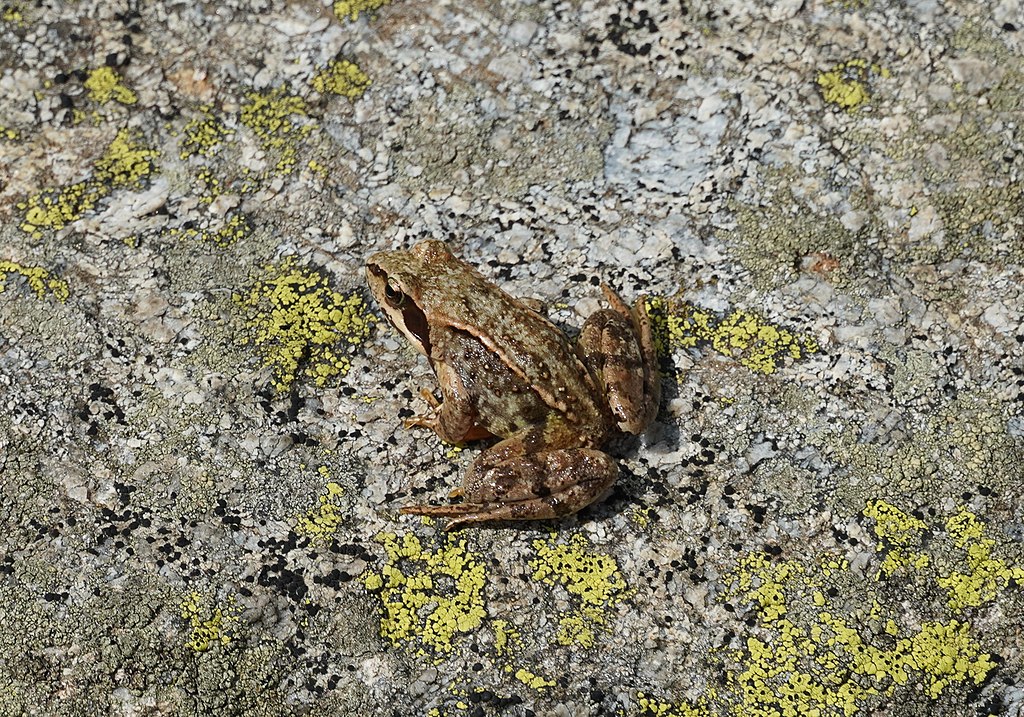
True frogs of the family Ranidae are quite widely distributed across many parts of our planet, and they’re known for their size as well as unusual behavior. The American bullfrog, in particular, can become up to eight inches (20 cm) long. As a form of self-defense when faced with danger, these amphibians resort to playing dead and blending into their surroundings using camouflage tactics, thus effectively masking themselves from predators.
It is truly remarkable how they have developed such adaptations to guarantee survival under difficult circumstances.
Glass Frogs (Centrolenidae)
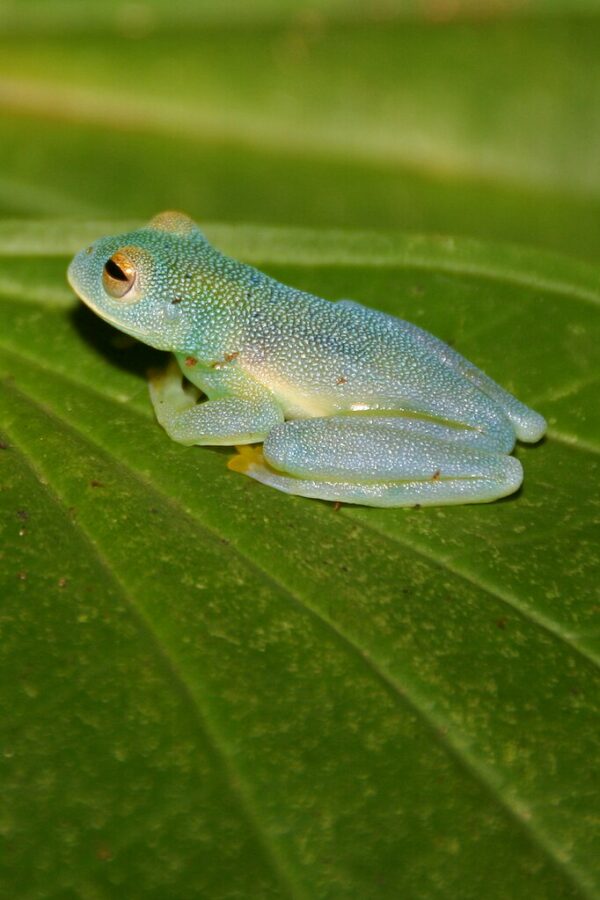
Glass frogs, or tree frogs, are remarkable creatures that have mesmerized people for their translucent green skin which permits an inside look at organs and even provides a view of its heart beating. Found in tropical rainforest environments where it is comfortable living amongst other small critters such as invertebrates and spiders. Its unique behavior captures attention, like when female glass frog species lay eggs above water sources on leaves!
These amphibians mainly feed off small bugs. This incredible appearance reminds us how full of life our planet truly is.
Unusual and Intriguing Frog Species
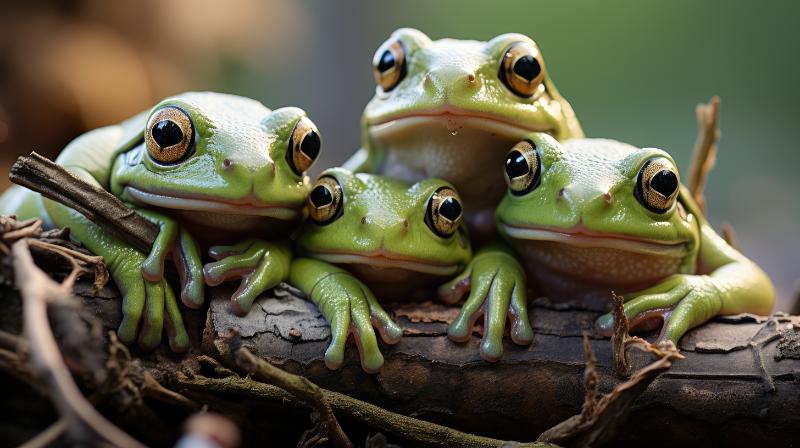
Frogs are amazing creatures, showing incredible adaptability and diversity in their many species. In this section, we take a look at some of the remarkable characteristics exhibited by frogs like the Desert Rain Frog, Vietnamese Mossy Frog or Wallace’s Flying Frog as examples for how they survive and thrive in diverse environments.
Other exciting frog types include the Brazilian Horned Frog, which hides under leaf litter to surprise its prey as well as the Ornate Horned Frog, commonly referred to as ‘Pacman’ due to its voraciousness when eating food nearby, not even being afraid! There is also Hairy Frong capable of breaking bones in toes during times of danger so that can be used later on with claws if needed.
The world boasts several intriguing kinds within many frog species, such as Goliathfrogs offering multiple surprises making them an accurate testament to these captivating amphibians nature-wise!
Desert Rain Frog
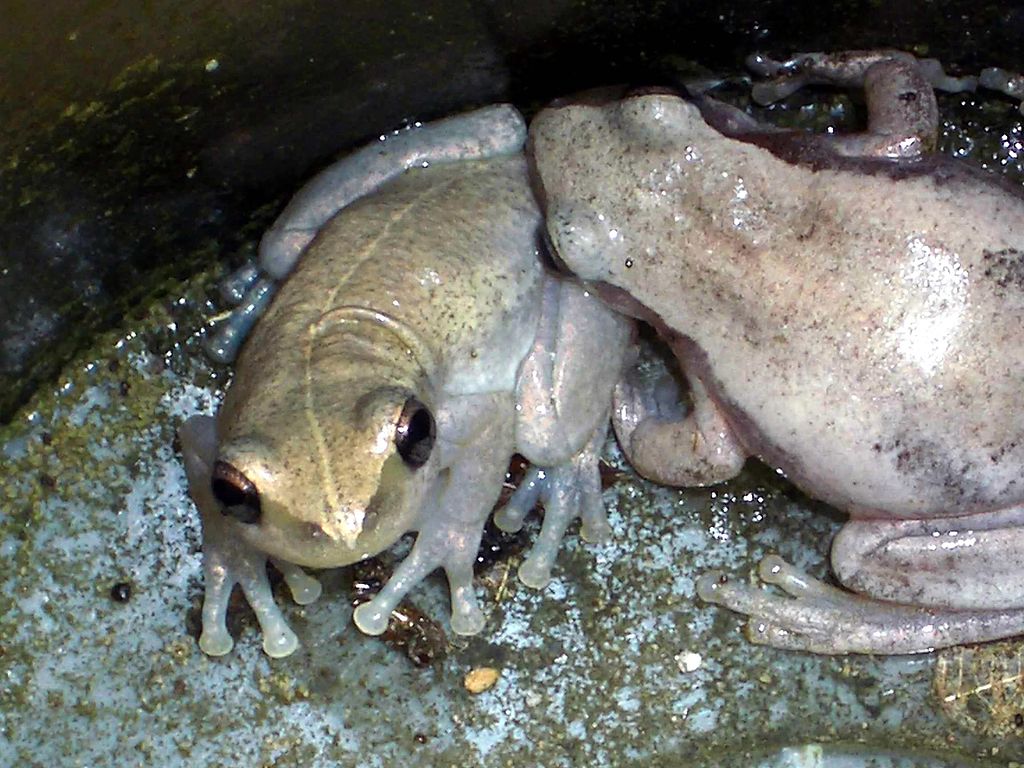
The Desert Rain Frog is a unique species found only in certain parts of Namibia and South Africa, living in an arid climate. This amphibian spends days beneath the sand to stay moist and cool, then emerges at night to search for insects or larvae. Unfortunately, this frog’s habitat has been disturbed by tourism, which leads it to be classified as Near Threatened on the IUCN Red List. We must be mindful of preserving delicate ecosystems so these curious creatures are not lost forever!
Vietnamese Mossy Frog
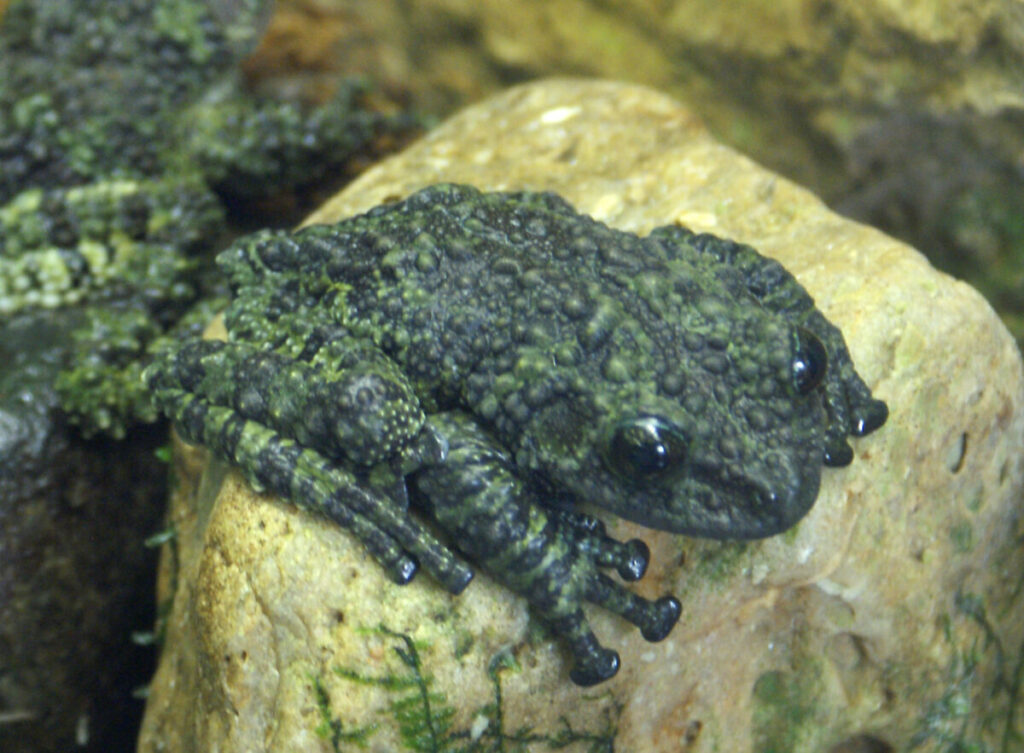
The Vietnamese Mossy Frog is an amazing species native to northern Vietnam forests. Its remarkable defense tactic – rolling up into a ball and playing dead, combined with its spiny bumpy green-black skin enable this creature to blend in among the vegetation perfectly. Also, it inhabits semiaquatic zones where you can find them preying on cockroaches or crickets near rivers or caves. This amphibian offers researchers interesting behavior that may be fascinating if studied properly, making appreciation easier for everyone else.
Wallace’s Flying Frog
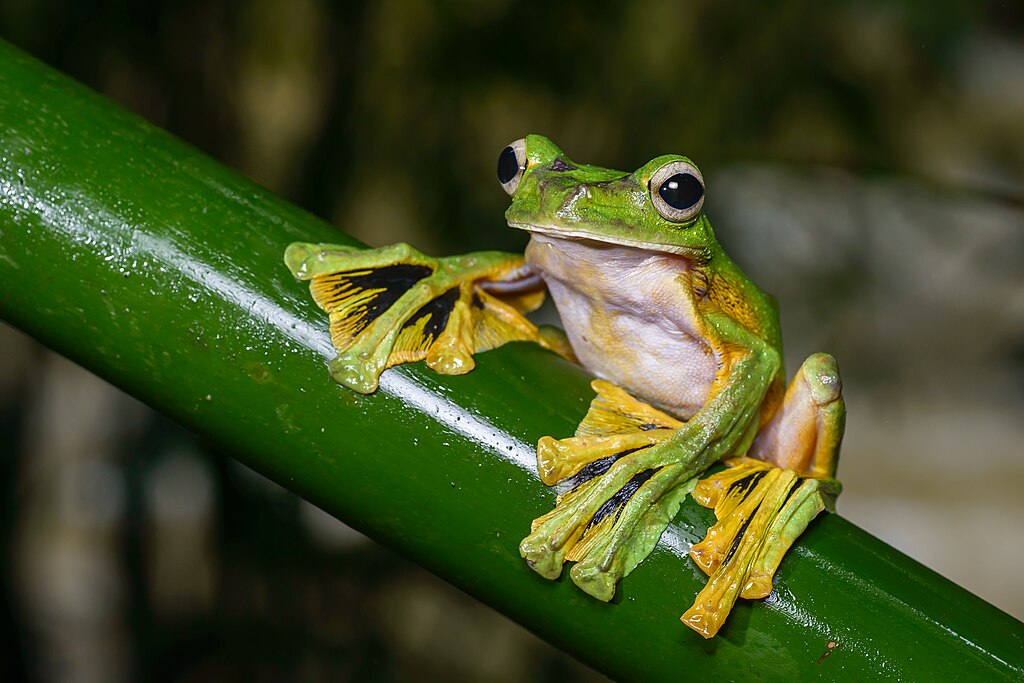
Wallace’s Flying Frog is an amazing species that lives in Southeast Asia. This particular type of frog has special toe pads adapted to living on trees, as well as the remarkable ability to use its legs for gliding or parachuting through the air! Female frogs deposit their eggs inside nests located above water sources. This ensures a better chance of survival for her offspring. Ultimately, Wallace’s Flying Frog highlights some incredible adaptations and behaviors within these creatures that allow them to survive in unusual habitats.
Adorable and Endearing Frogs
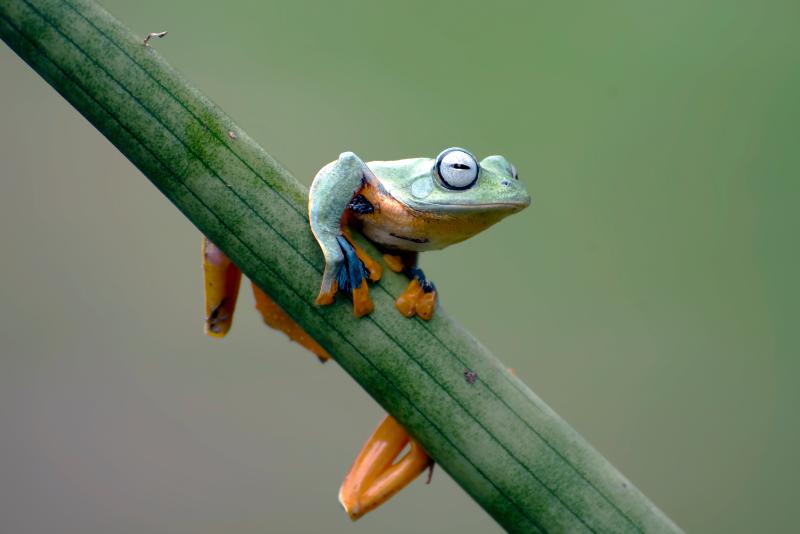
Not all frogs are venomous or have extraordinary characteristics, some of them may be simply cuddly and lovable. In the following section, we will discuss two varieties – Tomato Frogs and Amazon Milk Frogs – that don’t show toxicity like poison dart ones nor can fly like Wallace’s Flying frogs, but still offer a great appreciation for their attractive features.
Tomato Frog
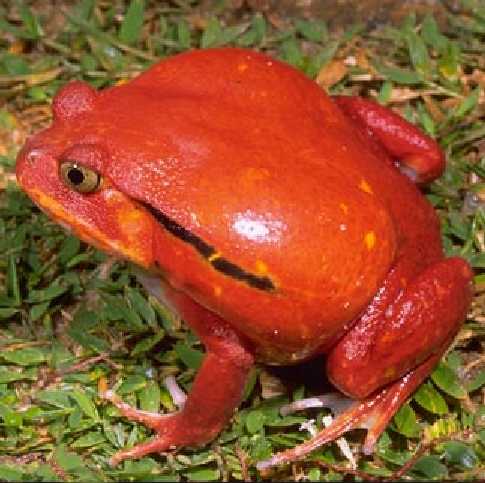
The tomato frog is an amphibian native to Madagascar, known for its brightly colored appearance and hardiness. Its striking red or orange body and a yellow underside have earned it comparisons to the more widely recognized Red Eyed Tree Frog in beauty. This attractive species can be seen inhabiting rainforests, woodlands near shorelines as well as urban locales that have soils ideal for burrowing into.
Despite not being harmful when handled correctly by humans, contact with this particular frog should still be done cautiously due to their mucous secretion from skin which may cause allergic reactions or irritation upon touch and hence caution must always prevail while handling these creatures.
Amazon Milk Frog
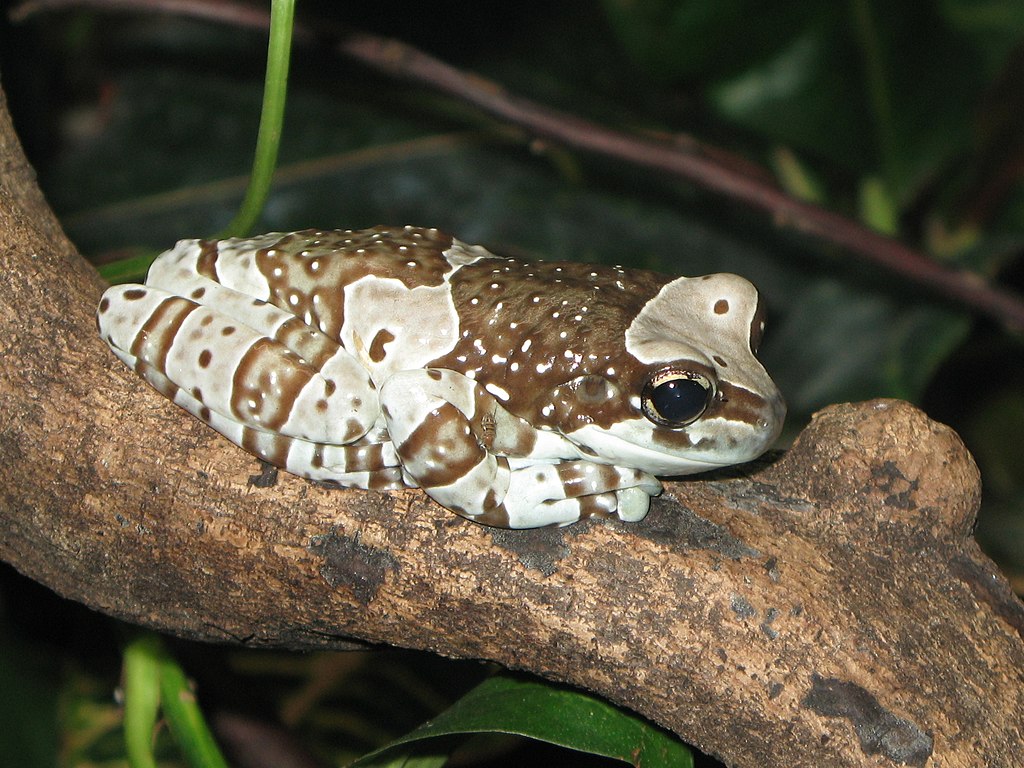
This amphibian species, the Amazon Milk Frog, is characterized by its attractive colorations which alternate between dark brown and light gray to blue patches. They dwell in northern South America’s Amazon rainforest where they blend into their environment with such unique hues. Possessing toe pads that help it adapt to an arboreal lifestyle enables them to inhabit this region safely – a beautiful testament of nature’s amazing diversity!
The World of Frog Sounds
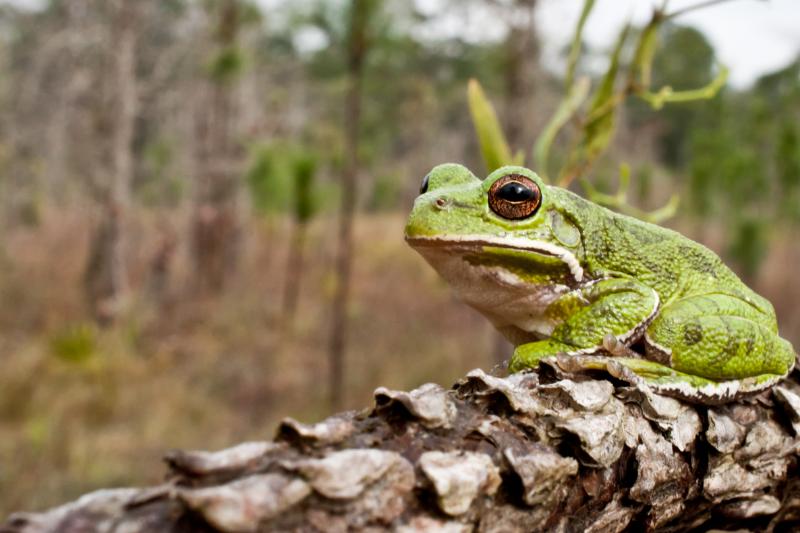
Frogs make calls that have an incredibly diverse range and are used for a number of different reasons. From low peeps to louder whistles, these vocalizations serve many functions including reproduction, boundary marking and protecting their own space from others. Here we will delve into the distinct calls frogs use in daily life.
And look at how they create them as well as what purpose each call serves among this fascinating species of amphibians.
How Frogs Produce Their Calls
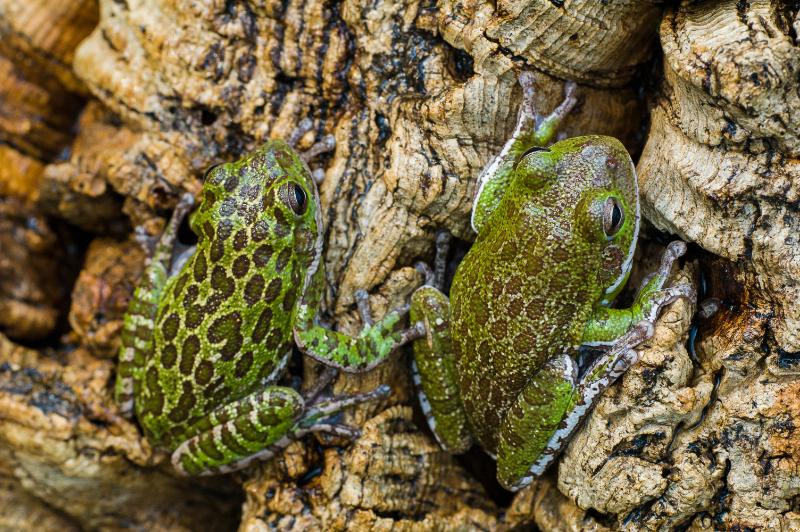
Frogs are a remarkably versatile group of animals, and their calls exemplify this adaptability. Though some species have vocal sacs on either the neck or mouth to amplify sound production, others lack them entirely – like Goliath Frogs that produce noises with just an open jaw. Similar to Desert Rain Frogs, Vietnam Mossy Frogs, and Wallace’s Frogs. Flying frogs make noise without utilizing any vocal sacks at all. These features demonstrate how various frog species use different strategies for generating sounds as they communicate amongst one another.
The Purpose of Frog Calls
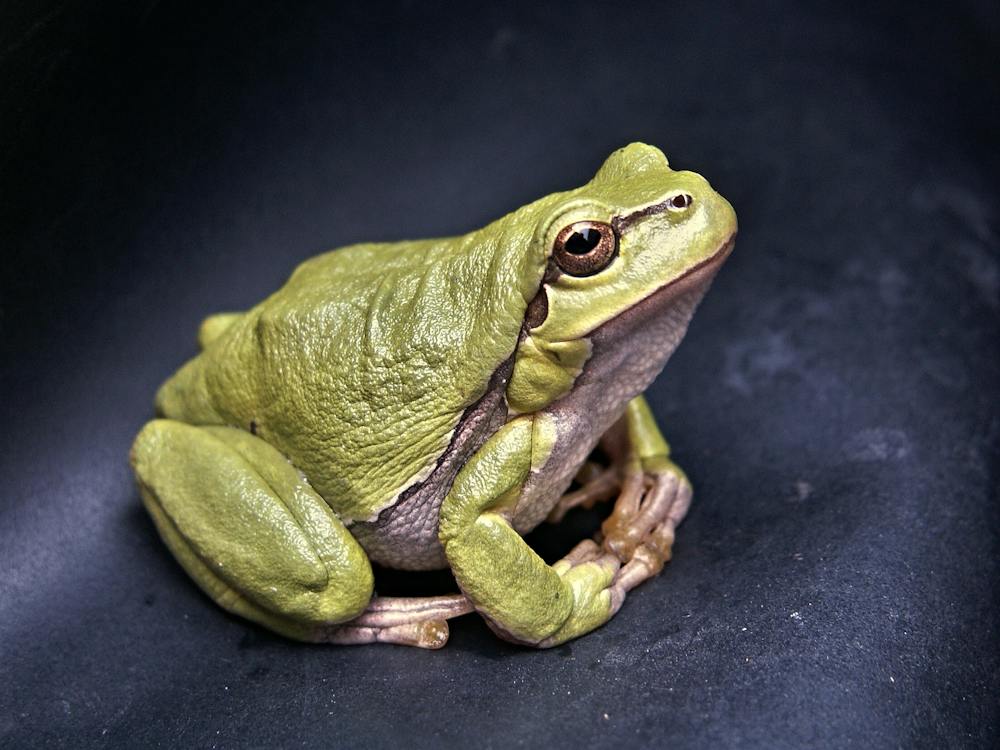
Male frogs utilize their calls for a variety of reasons, such as finding mates during mating season and claiming territory. Frog calls are also employed to fend off predators. These various functions reveal the complex behavior patterns associated with these amphibians’ lives.
During courtship season, male frogs use specific vocalizations to attract females from the same species. They employ sound to make known their presence within certain territories and scare away any unwelcome creatures approaching them. It is amazing what clever adaptations these wondrous animals have developed!
Frog Reproduction and Development
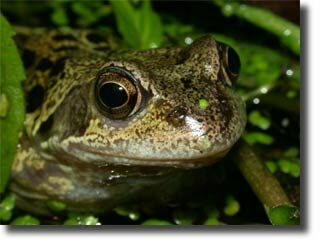
Frogs have some pretty interesting behavior regarding reproduction and the development of their young. One remarkable trait is how frogs go from larvae, also known as tadpoles, into full-grown adults.
In this section we will be looking at frog mating rituals, egg laying procedures and egg hatching processes that transform juvenile frogs into mature ones.
Mating Rituals
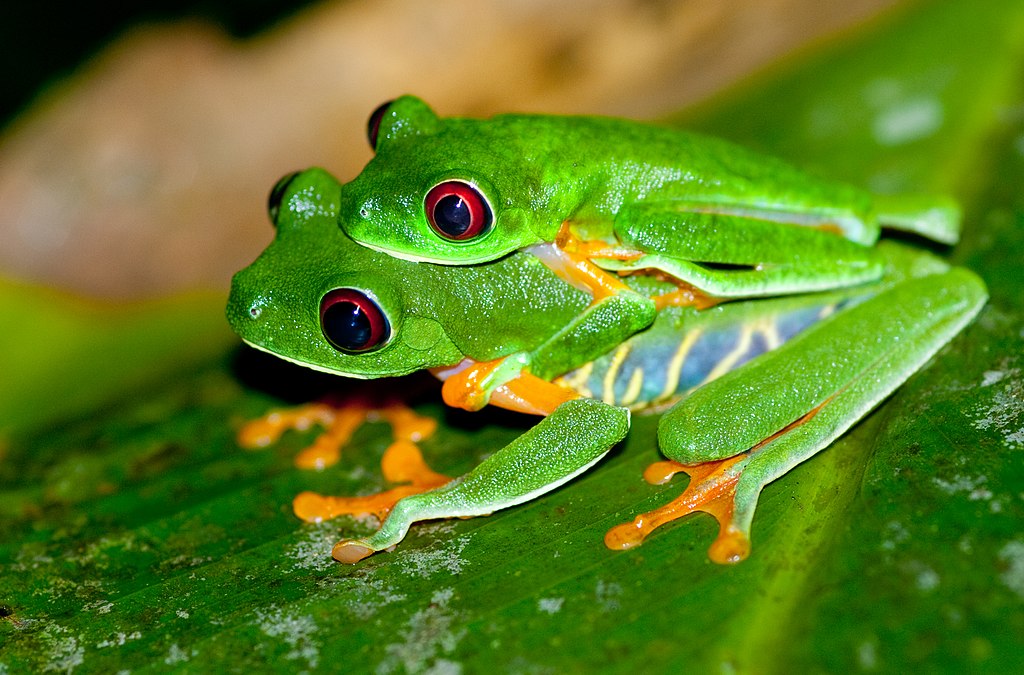
Mating rituals amongst frogs are incredibly varied, with mature males initiating the mating process by vocalizing. For most species of frog, when a female is attracted, she selects her mate who then wraps his forelimbs around her torso as eggs emerge that he will fertilize. The two may remain together in this embrace for hours to months depending on the type of frog. This remarkable diversity shown by frogs serves to underline their adaptability and plentiful nature!
Tadpoles to Frogs
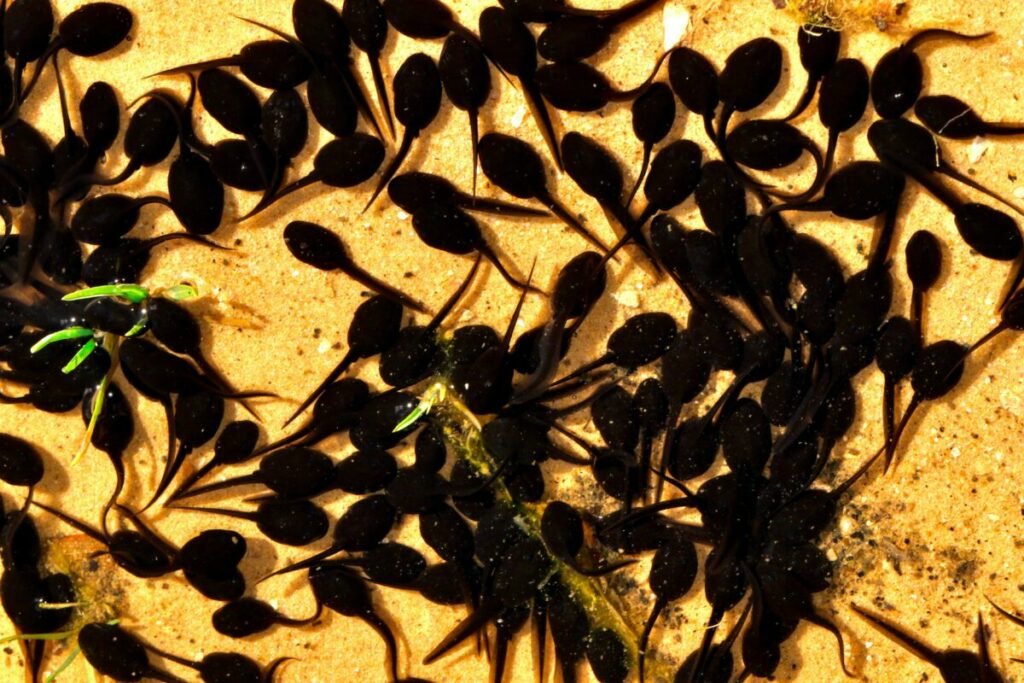
The evolution of tadpoles into full-grown frogs is a remarkable transformation. Over several months, the animals experience drastic changes: they start to grow legs, their tails disappear as their gills fade away, and in time, mature amphibians able to live on land are born. This process, known as metamorphosis, gives us insight into how flexible these creatures can be at various phases of life. It’s truly amazing! It proves that frog species have excellent capability when effortlessly adapting between aquatic and terrestrial environments.
Conservation Concerns: Threats to Frog Populations
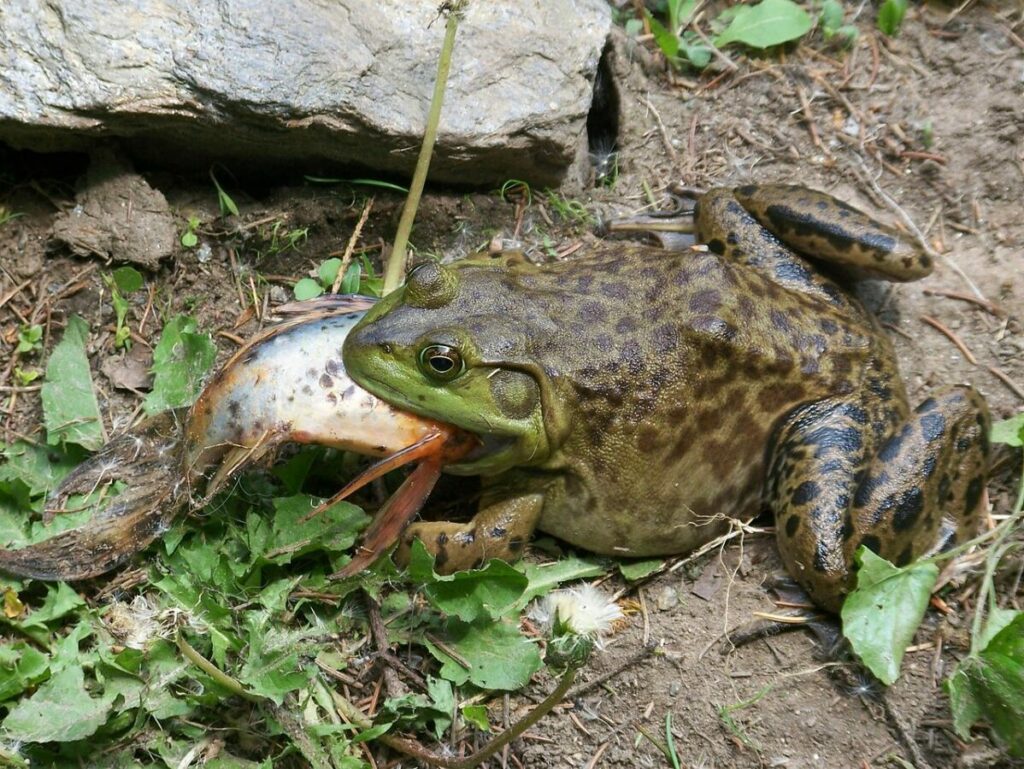
The worldwide decline of frog populations is primarily caused by human activities, such as habitat destruction and the introduction of non-native species. Pollution has also been linked to decreased numbers in frogs, while chytrid fungus has led to extinction or a severe decrease for at least 200 amphibian species. For these creatures – many of which are unique – to be preserved, these issues must be addressed swiftly.
Habitat loss due to expansion can have disastrous effects on certain frog populations if they lose their natural environments. Similarly, introduced alien wildlife may compete with native frogs over resources and even cause harm when consumed by other animals living nearby. Pollution poses risks and presents an additional danger concerning conservation efforts involving Frogs.
Finally, Chytrid Fungus remains one of the main culprits regarding mass extinctions among various types of Amphibians, including frogs themselves becoming victims themselves, needing urgent attention from humankind about this issue quickly before it can become a problem. Losses occur.
Frogs vs. Toads: Understanding the Differences
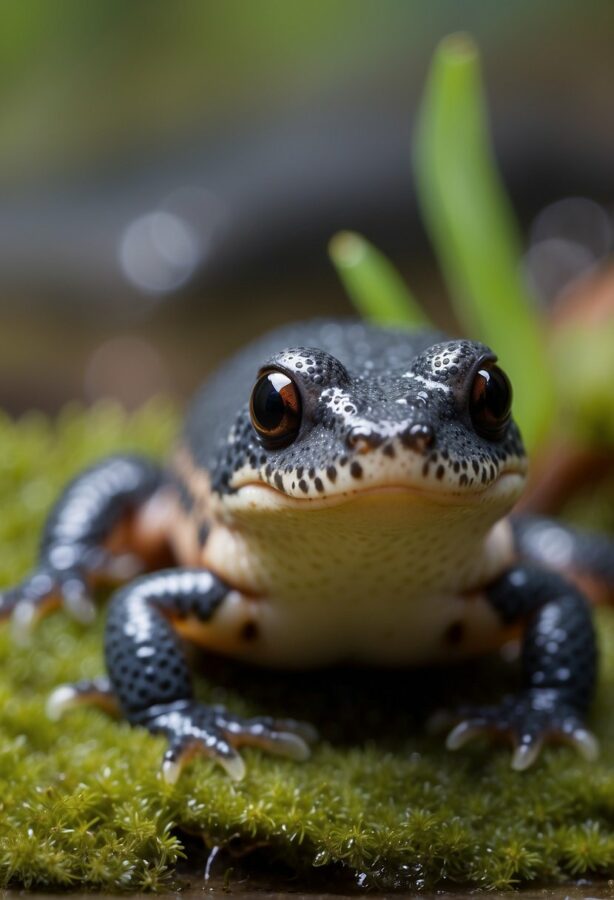
Toads have shorter legs and a more robust physique, often with dry, warty skin. They tend to stay away from water compared to frogs. Despite these distinguishing features, both animals show similar tendencies regarding reproductive behavior and undergo an incredible metamorphosis process until becoming adult frogs or toads. At the same time, they have specific differences, such as size or habitat preferences. Many traits related mainly to reproduction make the two species equally remarkable creatures who share certain characteristics worthy of admiration.
Summary

The amazing world of frogs is a testament to the complexity and diversity of nature. From translucent glass frogs, endearing tomato frogs, toxic poison dart species, and even Vietnamese Mossy Frogs displaying peculiar behaviors, it’s easy to appreciate these creatures’ incredible adaptability when we hear them calling or seeing them hopping through an environment.
The more we understand about our amphibian friends and work towards protecting the habitats in which they live, the greater appreciation there is for frog life!
Frequently Asked Questions
How many types of frogs exist?
It is estimated that there are 6,000 different frog species around the globe on all continents except Antarctica. Ongoing research and discoveries add to this already remarkable array of amphibians by uncovering even more varieties as time passes.
How many types of frogs are there?
Frogs are some of the most varied creatures, with more than 6,000 species identified thus far. There is an incredible range of sizes and colors among them, as well as diverse habitats they inhabit. Even now, researchers continue to find new types regularly. All this amazing variety makes frogs one unique class of animal on earth!
What is the rarest frog on Earth?
The Microhylid Frog, the rarest frog on Earth and endemic to Madagascar near Ambohitantely in only two small habitats, is considered a unique species.
What are 5 characteristics of frogs?
Frogs are special amphibians with five distinguishing features, including long back legs for hopping, a stout body structure, finger-like webs, the lack of any tail, and a 3 section heart. They alternate between living on land as well as in water while having bulging eyes and slimy skin that is constantly damp. Many frogs boast robust webbed feet, enabling them to jump far distances or swim easily.
What kinds of frogs are pets?
Some of the most popular pet frogs for beginner frog owners are African Dwarf Frogs, White’s Tree Frogs, Red-Eyed Tree Frogs, and Pacman or Fire-Bellied Toad species. These small amphibians can be relatively easy to care for if their needs, like enclosure size and temperature requirements, are met properly. When selecting a pet frog, it is important to take into account its dietary demands as well as ensure that your chosen frog appears healthy before bringing them home.
Related Resources: